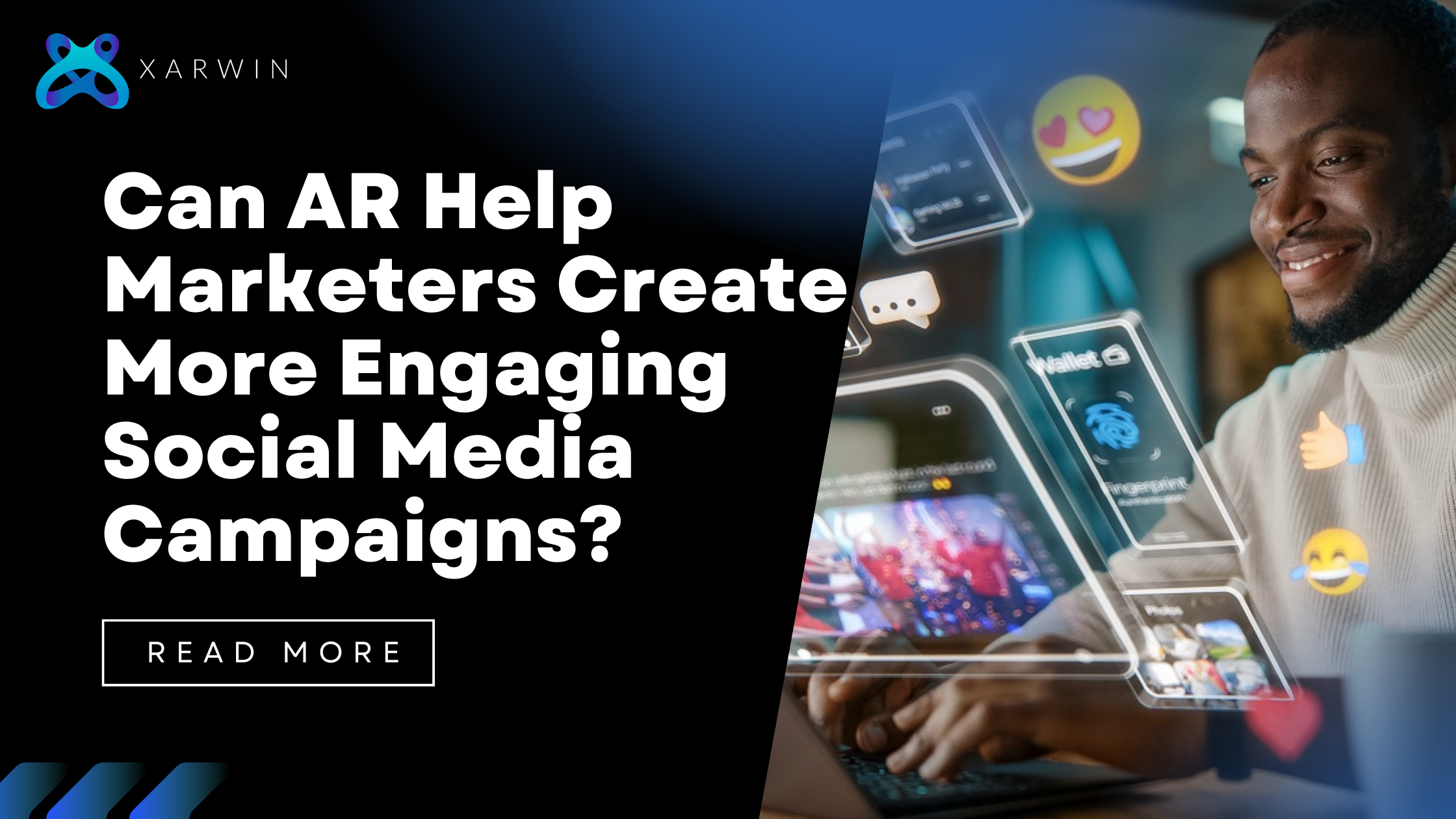The Power of Storytelling in Marketing:
A compelling brand story adds meaning, evokes emotions, and encourages audience engagement, ultimately creating loyal customers. Augmented reality is a powerful tool that can be used to craft unique and memorable stories that stand out in the digital realm.
A compelling brand story is not only about showcasing product functionalities. It goes beyond that by delving into how these stories imbue purpose, evoke emotions, and convey meanings, fostering engagement between the brand and the audience. This connection transforms occasional customers into loyal patrons and brand advocates.
How Augmented Reality Helps t Build Brand Story?
As innovators par excellence, marketers quickly adopted AR, embracing 3D technology as an extremely effective means to enhance customer engagement. Adopting AR for marketing is not merely a gimmick; it provides a cutting-edge platform for brands to interact with their audience in ways never witnessed before. Imagine customers trying out furniture in their living rooms beforehand or virtually experimenting with cosmetic products – this is no longer a vision of AR but a standard.
1. Elevating Brand Storytelling with AR:
With everything set for the narrative, let’s explore how AR is not just a flashy add-on but something revolutionary. In augmented reality, consumers aren’t mere observers; they become active contributors to stories. AR enables brands to create intricate real-time narratives, forming non-uniform but connected spheres in which consumers interact as knowing participants in the story.
The participatory nature of today’s AR stories allows marketers to seize this opportunity beyond informational means. Rather than telling a story through static images or text, brands can offer consumers the opportunity to explore, discover, and craft their own experiences. This dynamic interaction captures attention and lingers in the minds of consumers who have become co-creators of your brand story through it.
2. Creating Memorable Experiences:
Marketers are faced with the challenge of grabbing people’s attention in a fast-paced world. Augmented reality (AR) is a game-changer for them by creating unforgettable experiences that combine the physical and virtual worlds. Such experiences not only offer fun to consumers but also help in building brand loyalty. Positive AR experiences can make consumers remember the brand and share it with others. It’s not just about what consumers see but also how they feel during an AR experience. Therefore, brands that can create inspiring and engaging AR experiences can stand out in the market, leaving a lasting impact on their audience.
3. Personalization and Customization:
Resonance is among the pillars of good storytelling, a feat AR enables brands to achieve through customization. Augmented reality technology empowers marketers to tailor experiences based on individual preferences, offering each consumer a sense of personalization. Whether through an AR-based product demonstration, a customized message, or any other content that adapts to user actions, AR provides a heightened level of personalization.
With personalization serving as the central motivation to improve consumer engagement, AR quietly assumes the role of a formidable weapon in a firm’s arsenal for a lasting impact.
4. Building Emotional Connections:
The true impact of storytelling lies in its ability to evoke emotions; AR is one of the modes used to further enhance the connections between brands and consumers. With AR, users interact with the narrative, triggering the desired emotional response that long outlasts the end of the user experience. Through these emotions – whether joy, excitement, or achievement – sentiments become intertwined with the brand narrative.
Great AR campaigns leverage the emotional essence of storytelling and use technology to create unforgettable moments. For instance, charity campaigns allow users to virtually grasp the effects of their donations, evoking sentiments like nostalgia and empathy. The picture painted by AR becomes an alternative canvas for brands to connect emotionally with their audience for times to come.
5. Overcoming Challenges and Concerns:
Despite the potential AR holds in brand storytelling, challenges need addressing. The first issue is the potential supremacy of technology over the narrative itself. Additionally, accessibility issues and the lack of widespread adoption require marketers to consider their target audience and tech support.
Addressing these challenges requires thoughtfulness. Brands should focus on user experience, offering AR features that enhance the narrative rather than derail it.
The Future of AR in Brand Storytelling
The augmented reality realm is dynamic, propelled by technological advancements. Marketers who embrace innovative changes have a promising future ahead. The advent of 5G connectivity and the rise of AR glasses and spatial computing pave the way for a new form of immersive experience. Marketers should stay vigilant about such developments.
Picture your AR world adjusting as you act and react in it, allowing for a fluid and malleable tale that responds to the audience it is meant for. These technologies come together, giving marketers access to completely unheard-of heights of creativity when constructing brand stories; hence, the advent of AR in the future remains rather interesting.
Conclusion:
What we have discussed, however, is that the strength of storytelling does not only come from the narrative but from the emotions it elicits and the relationships it fosters. Augmented reality, which allows for the creation of experiences that transcend, magnifies the power of brand stories. The difficulty continues, and still, marketers have to see the future possibilities of AR and have to adapt to steer ahead in a cutthroat competitive market.
As a trailblazer in augmented reality (AR), Xarwin combines innovation with a user-centric approach to redefine industry standards. Its team of expert engineers, designers, and strategists excels in crafting immersive AR experiences across various sectors. With each project, the company not only meets current demands but also shapes future trends, establishing itself as a leading force in the AR landscape.





